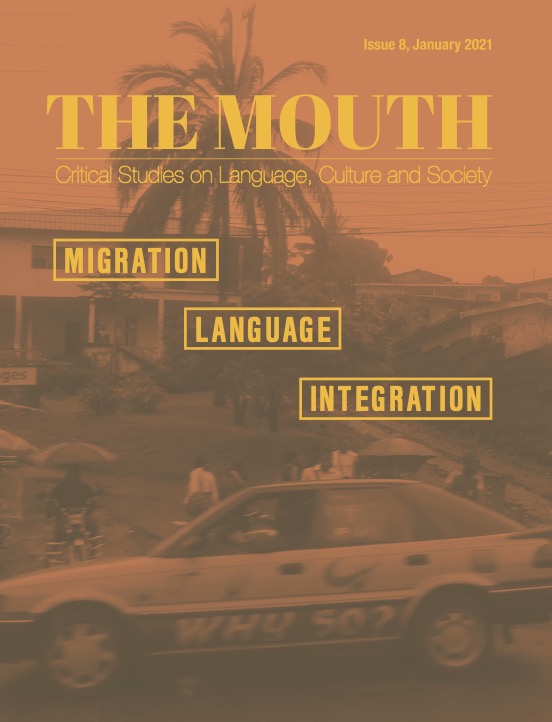Le répertoire linguistique des immigrés camerounais en Italie
DOI:
https://doi.org/10.18716/ojs/the_mouth.3096Abstract
Soixante ans après la fin de la colonisation des pays africains, les langues africaines, considérées comme des langues primitives, ont enrichi l’espace sociolinguistique européen devenant ainsi, grâce à l’immigration, des “langues immigrées”. Un constat qui révèle que les observations avancées pendant la période coloniale n’étaient pas soutenues par une base éthique, mais avaient plutôt une vision idéologiquement eurocentriques. Ce travail focalise l’attention sur le Cameroun, le seul pays africain à avoir subi une triple expérience coloniale (française, anglaise et allemande). Dans ce pays, où les langues locales tombent progressivement en désuétude sous la poussée et au profit du français et de l’anglais, héritages linguistiques de l’expérience coloniale, l’étude se propose d’observer la situation de ces langues locales hors des frontières du Cameroun et spécifiquement dans un contexte migratoire non francophone comme l’Italie. Cette contribution offrira la description du répertoire linguistique des immigrés camerounais en Italie. Il sera aussi question d’analyser les attitudes linguistiques des immigrés camerounais par rapport à leurs langues. Une autre question à laquelle nous fournirons des éléments de réponse est de savoir quels sont les choix linguistiques observés dans les familles camerounaises d’Italie. Les résultats obtenus se basent sur une enquête qui a impliqué d’une part 492 étudiants camerounais et d’autre part une cinquantaine de familles, avec au moins un géniteur camerounais, vivant dans une quinzaine de villes d’Italie.
Downloads
Published
Issue
Section
License

This work is licensed under a Creative Commons Attribution 4.0 International License.
CC BY 4.0 deed
https://creativecommons.org/licenses/by/4.0/deed.en
You are free to:
- Share — copy and redistribute the material in any medium or format for any purpose, even commercially.
- Adapt — remix, transform, and build upon the material for any purpose, even commercially.
- The licensor cannot revoke these freedoms as long as you follow the license terms.
Under the following terms:
- Attribution — You must give appropriate credit , provide a link to the license, and indicate if changes were made . You may do so in any reasonable manner, but not in any way that suggests the licensor endorses you or your use.
- No additional restrictions — You may not apply legal terms or technological measures that legally restrict others from doing anything the license permits.
Notices:
You do not have to comply with the license for elements of the material in the public domain or where your use is permitted by an applicable exception or limitation .
No warranties are given. The license may not give you all of the permissions necessary for your intended use. For example, other rights such as publicity, privacy, or moral rights may limit how you use the material.Notice
This deed highlights only some of the key features and terms of the actual license. It is not a license and has no legal value. You should carefully review all of the terms and conditions of the actual license before using the licensed material.
Creative Commons is not a law firm and does not provide legal services. Distributing, displaying, or linking to this deed or the license that it summarizes does not create a lawyer-client or any other relationship.
Creative Commons is the nonprofit behind the open licenses and other legal tools that allow creators to share their work. Our legal tools are free to use.






